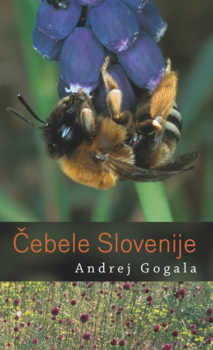Čebele Slovenije
V knjigi so predstavljeni taksonomija in sistematika čebel (Anthophila) in njihova biologija: zbiranje in prenašanje hrane, vedenje izbirčnih čebel, ki so vezane na določene hranilne rastline, načini gnezdenja, kukavičje čebele, ki odlagajo jajčeca v gnezda drugih vrst, vedenje in prilagoditve samcev. V poglavju o raznovrstnosti divjih čebel so opisane spremembe v slovenski favni. Po avtorjevem mnenju so predvsem posledica sprememb podnebja in izjemnih vremenskih razmer. Večji del knjige obravnava družbeno življenje čebel, predvsem prvotnejše socialne oblike, ki nam olajšujejo razumevanje razvoja družbenih skupnosti. V poglavju Poti in stranpoti evolucije avtor opisuje dolgoročno prednost vrst z družbenimi ali simbiontskimi povezavami pred vrstami, pri katerih se zaradi prevlade najmočnejših in največjih osebkov v medsebojnem boju povečuje velikost osebkov in zmanjšuje njihovo število. Nadaljuje ga poglavje o različnih oblikah družbenih skupnosti, s primeri pri čebelah. V zadnjem poglavju so predstavljene družine in rodovi čebel, ki živijo v Sloveniji. Velika vrednost knjige je tudi 154 izvirnih fotografij različnih vrst čebel, ki ponazarjajo njihovo vedenje v naravi.
Prenosi

Zbirka
Licenca

To delo je licencirano pod Creative Commons Priznanje avtorstva-Nekomercialno-Brez predelav 4.0 mednarodno licenco.
